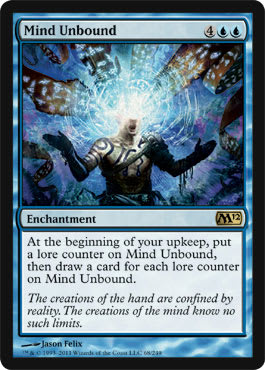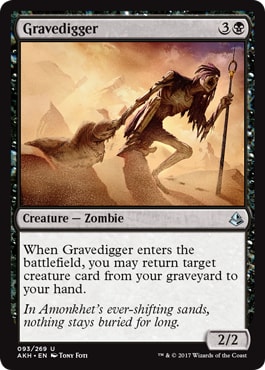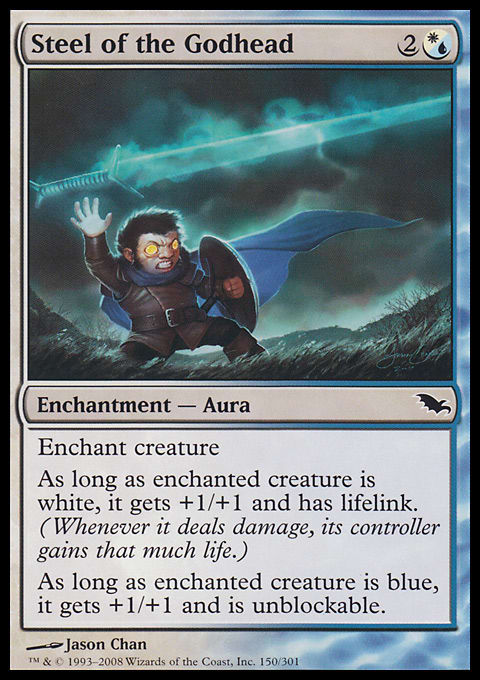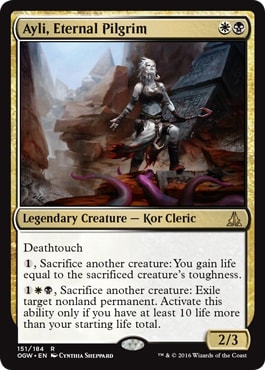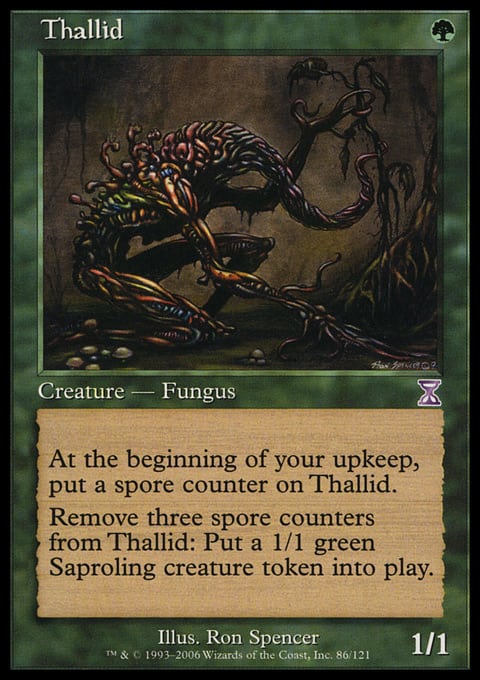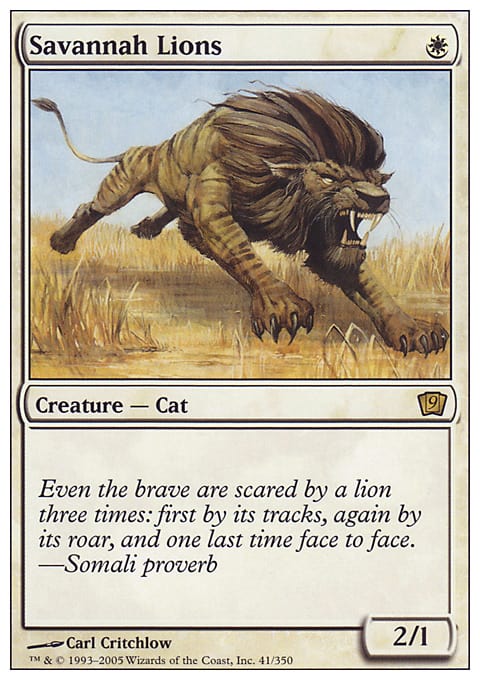Hello, folks!
I hope you are having a wonderful time rocking your collective casual blocks and enjoying hanging out with your friends and friends-to-be. Magic is a great tool for socialization, hanging out, and more. And of course, one of the more common ways to do that right now is Commander. But the folks I’m talking with are growing a little restless. They want something a bit more. Commander is growing blasé.
So why not spice it up? If Commander is getting a bit on the stale side of life, let’s shake it up a little bit. Right?
Today, I have five different variants for rocking Commander that’ll serve to bring some new to the old—some refreshment to a thirsty metagame. I’m sure we can find something in here for you!
Five Commander Variants for Y’all!
Commander 150
This variant is simple enough. Many decks and metagames have become overly predictable. They have highly tuned hundred-card engines of Commander’ best-of lists. The problem is often one of deck size. When I originally tell people from sixty-card formats about how cool Commander is at one hundred cards, they really start to get it. With both the Highlander rule in place forcing folks to spread out their card selection as well as the added cards, they see and enjoy the added chaos. We like being forced to do something else, something entropic. But now that we’ve played Commander for a while, that hundred-card limit is fully understood. We know the ideal land-to-card ratio, the perfect elements of redundancy that gives us what we need, and more. Right?
So the first variant is simple: Add fifty more cards. Require a deck size of one hundred fifty.
Now Commander has the quirk of being one of the only formats that I know in which a deck has to be a precise a number of cards. Standard? At least sixty, but you can play more if you want to. Sealed? At least forty. Five-Color? At least three hundred. Pauper? At least sixty. Commander? Precisely one hundred. It’s odd. So, technically, a Commander deck at one hundred one cards is illegal, although we all know how math works. A one-hundred-fifty-card Commander deck is going to be worse than a hundred-card deck for any number of reasons, and yet, you might run into some folks who don’t want to play you at the store or something since its “illegal.” But in the meantime, you can have a lot of fun with C150. I’ve played it, and the variance it adds is very much worth it. It’s a simple change that really restores the feel of early Commander decks and games in a lot of major ways.
Commander ’95
This format uses a different slate of cards, namely those printed up through, and including, Homelands (and the promo cards as well). Otherwise, all rules of the normal Commander rule apply, such as the banned list. You may play with any version of a card from this era, even if it was printed later. Sure, use that Swords to Plowshares from Conspiracy. And a Control Magic from Commander (2013 Edition) works as well. The vast majority of the good cards were reprinted and very cheap—Counterspell, Lightning Bolt, Fireball, Remove Soul, Spell Blast, Hypnotic Specter, Shivan Dragon, Serra Angel, Sengir Vampire, Llanowar Elves, Birds of Paradise, Disenchant, Icy Manipulator, Jayemdae Tome, Sol Ring, and more.
With so many cheap key creatures and spells, there’s not a lot of financial investment required for the format, compared to how you think it would be—and a lot of good-quality, lesser known cards from the era, such as Arena, Dance of the Dead, or Vesuvan Doppelganger are pretty cheap as well.
I have played this format more than any other on this list, and it is a surprisingly deep, powerful, interesting, and flexible card pool up through Homelands, and it’s quite enjoyable. (Plus, I created it, so there’s that!).1
Combine Them Together
Another major way to put some variance into your Commander games is to combine the format with another, pre-existing format. How about something like Pauper? Pauper Commander is a fun way to break out of the Commander malaise and to regain that new-car smell. Commons tend to be good at one-for-one trades, like countermagic, removal, and such. There’re no powerful card-draw engines, and the creatures are more like Mulldrifter and Gravedigger than Woodfall Primus and Sheoldred, Whispering One. An all-common iteration of Commander is a powerful change-up.
And course, that’s not all. You could combine Commander with other formats, like Tribal Wars (every deck must include at least one third of its cards of one creature type), St. Patrick’s Format (every card must be green), 237 (every nonland card must have a converted casting cost of 2, 3, or 7), legendary (50% of the nonbasics in the deck are legendary), or whatever else spices your table up. The goal is to combine formats you like or need with Commander in order to make something new and exciting.
Identity Crisis
This Commander variant requires multicolored leaders for your deck. Why? Every nonland card in the deck must precisely match the color identity of your leader. Isn’t that already the rule? Nope!
See, if I have Bruna, Light of Alabaster as my Commander normally, I can play stuff in my deck like Angelic Destiny, Iridescent Drake, and Sovereigns of Lost Alara. But under Identity Crisis, every card that does have “Land” written in the type line must be both white and blue. So Sovereigns would be fine, and I could toss in Invocation of Saint Traft, Momentary Blink, and Steel of the Godhead—all have both color identities.
The result is a deck with a surprising number of restrictions. And you know what Mark Rosewater says? Restrictions breed creativity. There are a bunch of leaders you can choose that really work well under the rules of Identity Crisis. Leaders that care about both colors, like Tolsimir Wolfblood and Lyzolda, the Blood Witch jump to mind.
And that’s not all; I’m sure, when you start digging, you’ll find a lot of great Identity Crisis options.
Standard Fun Times
For another challenge, why not just build and play a Standard-legal Commander deck? With the Dragons of Tarkir Dragonlords, fun legendary leaders from Shadows over Innistrad, Battle for Zendikar, and Magic Origins all rocking the block, you can find anyone from Noyan Dar, Roil Shaper to Mina and Denn, Wildborn and from Dragonlord Kolaghan to The Gitrog Monster all out there—a lot of good stuff.
And you can easily build a Standard-legal Commander deck with the various cards of quality that are in print. Take a look at cards like Pia and Kiran Naalar or Ayli, Eternal Pilgrim. You can find a lot of inspiration for different ways to take your Standard deck.
And if you want a limited deck concept, but Standard is too small of a kiddie pool, you could do Extended instead (Add in Khans of Tarkir, Theros, Return to Ravnica, and Magic 2015). Adding the Gods, guild leaders, and clan leaders gives you so many options; you’ll not tire of it soon.
Or you could go Modern instead.
I also like doing Block, so you could have an Odyssey Block Commander deck or a Ravnica: City of Guilds one. That would be really interesting.
Another option would be to building your own block. Choose any first set—like Onslaught or Scars of Mirrodin. Then, choose any second set—like Stronghold or Fate Reforged. Then, finish with any third set, like New Phyrexia or Future Sight. Finally, build a Commander deck with the newly minted block. (For these rules, two-set blocks, like Battle for Zendikar or Lorwyn have a first set, a second set, and no third set option.) Splashing together different sets could give you serious power. Imagine taking a set from the first Mirrodin, Scars of Mirrodin, and a Shards of Alara set that gives you Esper power and leaders. Or you could marry the enchantment loving of Theros block with Urza’s block. You get the idea.
But the basic concept of this is simple enough: Do an existing format for your Commander deck.
Anyway, there’s your quintet of variants for Commander. From stuff that’s easy (C150 and Standard Commander) to harder builds (like C95 and Pauper Commander), you’ll find a variety of fun ways to change your metagame, shake up your Commander night, and to refresh the whole thing. So what’s stopping you? Get your Magic on!
1There is a casual format out there called Old School ’93–’94. It’s a non-Commander format, and it’s a self-admitted exclusive to itself and people with cash. It only allows cards through The Dark to be played. In fact, even Revised Edition is banned. You are only allowed to play with the original printings of each specific card.
Now, obviously, this is a huge problem financially. Take as an easy example Swords to Plowshares.
Swords is one of the best pinpoint removal spells of all time, and you’d probably want to play one in any white-bearing OS ’93–’94 deck. Right? Okay, but since Swords is a solid card, there are a variety of formats out there that have pimped their cards and want the old Alpha/Beta Swords for their Commander or Legacy or whatever.
Now, if you want to buy a Swords or this format, the cheapest is the Unlimited Edition printing. Although not in stock, that’s around $8 at CoolStuffInc.com vs. the $3 version that’s the cheapest. A set of four Swords is $32 compared to $12 for cheaper ones. And that’s just sticker prices. If you already own Swords to Plowshares, you have to swap, and all of that money spent is pure loss because you have to buy a copy of a card you already own in order to play Magic.
Consider the difference in price for a card like Llanowar Elves, where the upgrade to Unlimited is $1.50 for a card that’s otherwise a quarter. Lightning Bolt? $3.50 for a cheap one vs. $9 for an Unlimited one. And those are commons and uncommons that are pretty easy to find. The tax increases from there (like for dual lands, for example)!
Take Strip Mine, reprinted in Fourth Edition and other places. In white border, it’s $5 or $6. Antiquities? $15 or $20 for played copies. Mishra's Factory goes from $4 to $15 played for the cheapest version.
In fact, it admits it’s elitist and pricey. That’s the fun: “The hard, time-consuming, and expensive road to build most decks is considered an important feature of the format.” Later, the author will say the format is casual, despite the elite attitude.
Take as an example, the arguments for bringing in Fallen Empires to the format. (1994 is in the name, and FE was released in that year, and it’s old-school by definition as a pre-Ice Age product.) The reasons for—increased card pool, good cards to add, giving the game more tribal options, and more—are all good for the format. The reasons against? It’s a cheap, easily attained set, and adding an overprinted set to the mix is ultimately against the flavor of the format.
By definition, this format is elitist, exclusionary, and expensive. That’s who they are. And of course, no proxies.
Now I am including it here with the above links so that if it’s your thing, you can feel free to check it out. Enjoy it.
However, it’s not how Magic works. It’s doesn’t feel like Magic to me.
One of my favorite times playing Magic was when I had a group of friends and extended friends who came by my place every Friday night for Magic—often fifteen or twenty folks swinging by. It was awesome, and more importantly, it was welcoming. Hospitality is one of my core values: making sure everyone has a spot at the table. That’s why you can see my budget series or my various ways to talking up cards that are unused, and thus cheap. Everyone is welcome. Play whatever you want. Proxies? Fine. I’m not losing sleep.
Elite is defined as a superior part of a group or a class of folks that have more power and privilege due to wealth. It’s unwelcoming by default. I can’t show up at a game, with so much as a Revised dual land, and be okay, Let alone a Chronicles Sol'Kanar the Swamp King or the virtually bulk rare Savannah Lions from Fourth Edition or Ninth Edition. I have to buy cards I already own in order to play. That’s unwelcoming. That’s inhospitable. To me, that’s not what Magic is supposed to be about.
So, clearly, I’m not ever going to play OS ’93–’94. And that’s okay. Magic has a lot of other games, formats, and variants. And again, if it resonates with you, head on in.
But I also want to draw a line of distinction between C95 and OS ’93–’94. I encourage you to use cheaper versions of older cards. If you don’t have a Llanowar Elves, I want you to just spend a quarter on them. There’s no sense spending more. If you don’t own Serra Angels, spend $0.80 for a player’s set at CSI.com right now, instead of $20 or more. Grab a cheap Sol Ring from the last few years. You’ve got this. No sense spending more than you have to.
See, I love the Commander ’95 variant a lot. I’ve written a ton of articles on it. I want you to experience it, too, because of how fun it is. So anything I can do to facilitate that, I’m in. That includes the most beat-up version of Juggernaut from Darksteel or the one-buck, white-bordered version of Arcades Sabboth to lead your deck, instead of the pricier Legends copy. Everybody is welcome to play, to enjoy, and to get your old school on as well!














